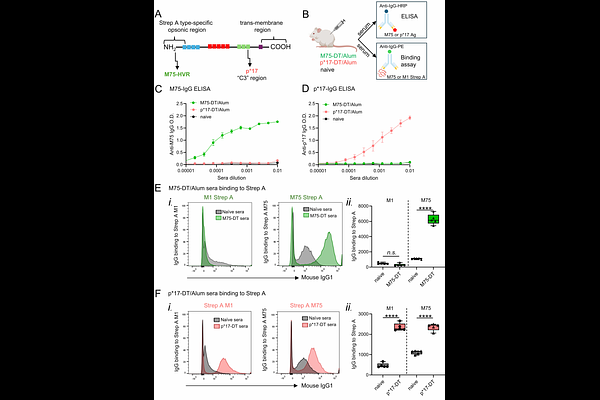Sub-clinical exposure to Streptococcus pyogenes drives the development of immunity

Sub-clinical exposure to Streptococcus pyogenes drives the development of immunity
Lepletier, A.; Vedis, D.; Ozberk, V.; Anugraham, M.; Bassette, D.; Calcutt, A.; Frost, H.; Azzopardi, K. I.; Steer, A. C.; Kalarich, D.; Osowicki, J.; Good, M. F.; Pandey, M.
AbstractAge-related declines in Streptococcus pyogenes infections suggest that immunity develops progressively through repeated early-life exposures. However, the exposure intensity or duration required remains unclear, as some individuals appear immune despite few or no previously detected infections. Using samples from a human challenge model of pharyngeal S. pyogenes infection (CHIVAS), we investigate whether symptomatic disease is necessary for inducing immunity. Both symptomatic and asymptomatic participants developed M75-specific serum IgG, IgA, and memory B-cell responses, which persisted for at least 6 months. IgG from asymptomatic individuals showed enhanced binding to M75, was bactericidal in a murine infection model, and displayed altered Fc glycosylation patterns consistent with greater effector function and reduced inflammation. However, the challenge had no impact on responses to the conserved cryptic epitope p*17. These findings demonstrate that asymptomatic (or sub-clinical) exposure to M75 S. pyogenes generates functional immune responses and contributes to the streptococcal immunity that emerges by adulthood.